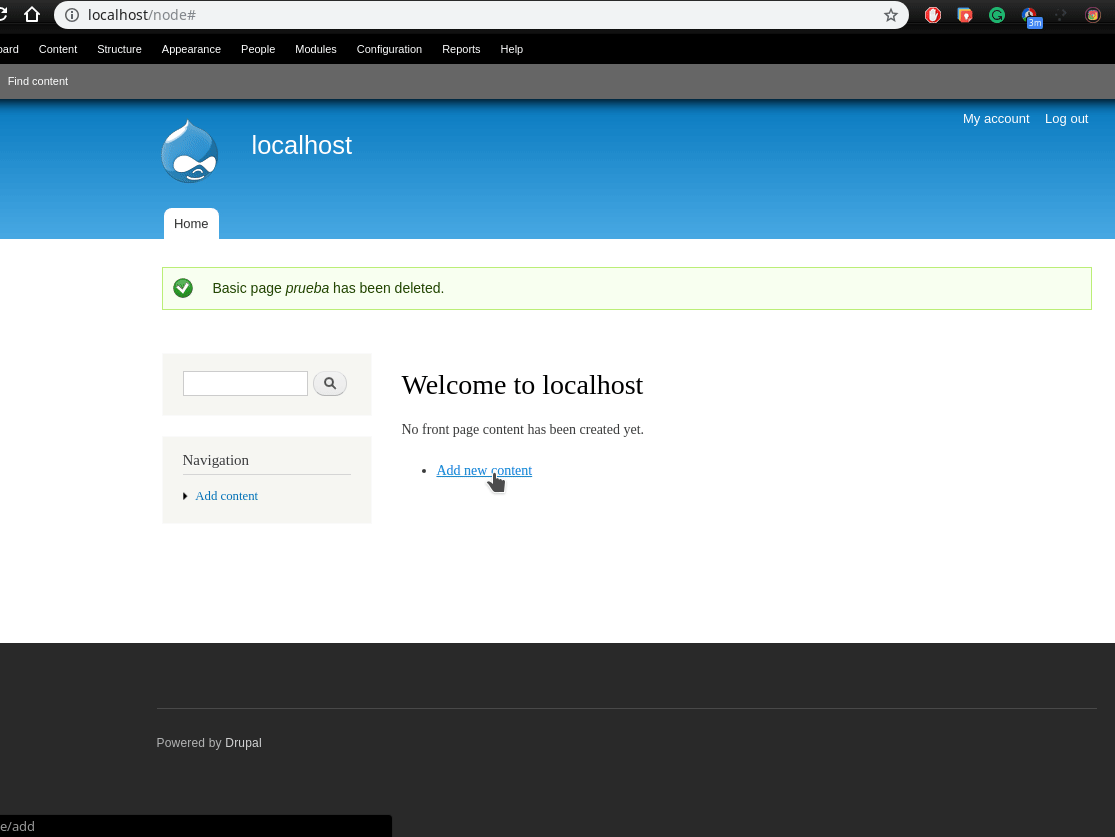A remote code execution vulnerability exists within multiple subsystems of Drupal 7.x and 8.x. This potentially allows attackers to exploit multiple attack vectors on a Drupal site, which could result in the site being compromised. This vulnerability is related to Drupal core - Highly critical - Remote Code Execution - SA-CORE-2018-002. Both SA-CORE-2018-002 and this vulnerability are being exploited in the wild. --- MITRE
Because of some Networking limitations in Docker for Mac (https://docs.docker.com/docker-for-mac/networking/#use-cases-and-workarounds) and Windows, the code below should be executed on a LINUX machine whith docker and docker-compose installed.
Here we have a two steps procedure, first the Drupal machine with a vulnerable version 7.57 and second the attacking machine with a modified exploit that allow us to show the vulnerability potential danger.
- Vulnerable machine: For the environment setup we have to execute the following commands:
# Supposing that you are placed inside the directory CVE-2018-7602
cd vulnerable_machine
docker-compose up -d
cd ..
-
Warning Be sure that the port 80 is not used by any other software before running the command.
-
Attacking machine: Here we will instantiate a Metasploit docker image that contains a customized exploit (drupal_drupalgeddon3_commander) which will be used furthermore. To doing that we execute:
cd attacking_machine
docker-compose run --rm --service-ports -e MSF_UID=$(id -u) -e MSF_GID=$(id -g) ms
- Clarification: Is recommended to have a separated terminal executing that command given that we will need that session for the exploit phase.
If you have some problem executing the commands below, send an email to andres.castellanos-paez@grenoble-inp.org attaching the execution log and he will be glad to help you solve the problem.
Now that we have Drupal running, we have to configure and create some content using Drupal. To do that follow the next steps:
- Go to the Drupal main page that should be located in http://localhost then use the default configurations and click next in each step. Using like database credentials:
- Database username: postgres
- Database password: safe_password
- Database host: Change in the ADVANCED_OPTIONS for the database. the database host from localhost to postgres
- The next step is creating a node in Drupal. A node means content like a page or blog entry. To do that only log in if you are not logged and click on add new content. Then choose an article or basic page, fill it with random information and save the number that appears in the url space after the creation of the page. Usually it is 1 if the first page is created.
# Overview
We will try to use the vulnerability to execute commands like ls or whoami
to show that it is possible to execute commands remotely.
Now that we have the vulnerable Drupal instance running on localhost. The next steps is to start using the metasploit instance created in the environment setup step.
On metasploit, we need to reload the exploit database using the command:
reload_all
With that we have access to our needed exploit. So to prepare the exploit needed info we will need the session cookies from some user logged in on the site.
To obtain it in an easy way. Supposing you're still logged in. Go to the developers tools look at the cookies storage and save it for later. You should obtain at the end something like
#<session_name>=<session_token>
SESS49960de5880e8c687434170f6476605b=DGHZKHWaNC51nrVQHEsTD0_PS68EeNyvGjdzk1SVmss
An example using google chrome to obtain the cookie

Now we start loading the exploit with metasploit. For doing that execute the following commands:
use exploits/unix/webapp/drupal_drupalgeddon3_commander
show options
Like you can see we need some parameters. We set up the parameters like that
set RHOSTS localhost
set DRUPAL_SESSION <session_name>=<session_token>
After doing that we can execute
exploit
We will get the user that is currently executing the web server. On this case www-data. Because the default command set up is whoami. Also you will see some extra information in JSON format that is not relevant for us.
End of experimentation: If you arrived to execute all the experimentation successfully then it is the end Congratulations.
If you want to follow experimenting you can change the command value using the set instruction. Or modify the ruby script used by metasploit.


